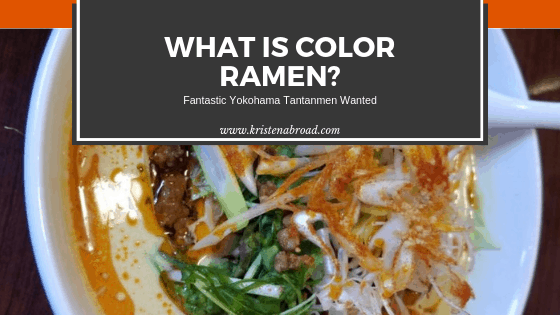If your feeling noodles in the Noge area of Yokohama, I highly recommend you head over to Tenfu for a bite.
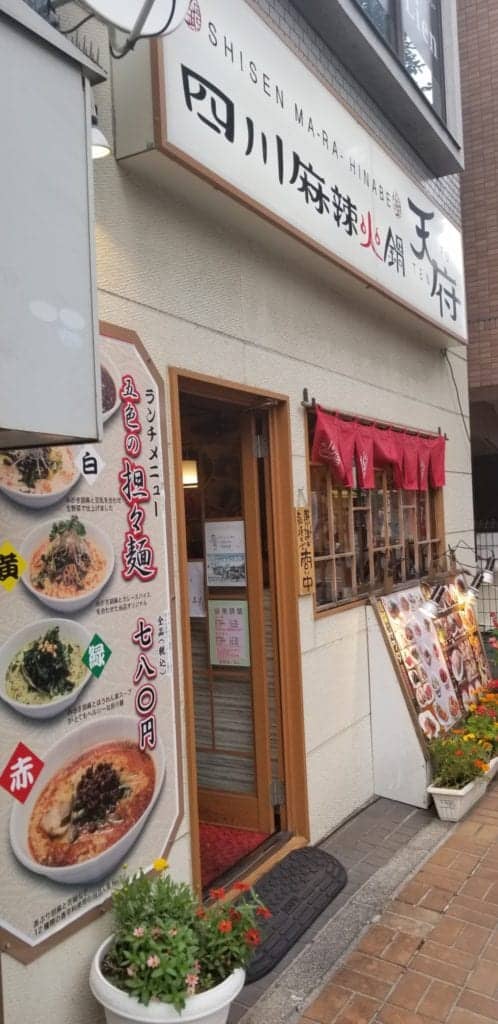
[Editor’s Note: This post was originally published in July of 2018 and has been updated for freshness, accuracy and comprehensiveness.]
Why’s it called Color Ramen?
Nicknaming places is a lazy habit when you don’t read kanji, to be honest. However, while I get mad at my fellow American’s for not learning Japanese, in this case, I can see it. It’s not very ingenious but there is massive signage both indoors and out for their special 5 color tantanmen (五色の担々麵). Don’t think this is like “normal” ramen you’ll find in every corner of Japan. The flavors are very unique and why I love it and hope you will too.
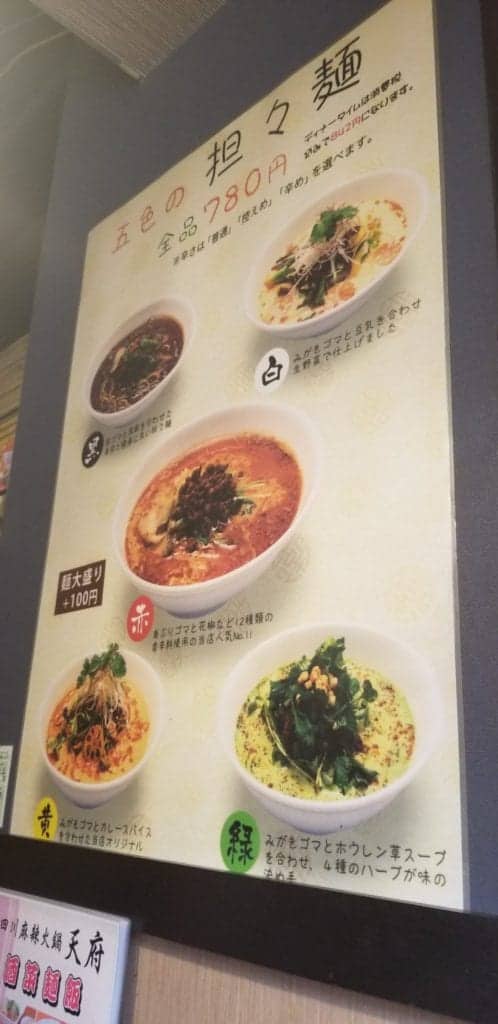
Colors of the Rainbow
It’s like anything else in Japan, you have to try them all. Ordering is easy. You just say which color you want. There are 5 to choose from. This is a Szechuan place though, so you also get to tell your spice level similar to spicy ramen restaurants in Tokyo.
- Green (緑, みどり,
midori ) the sesame base is combined with spinach soup and four other herbs. - Yellow (黄色, きいろ, ki-
iro ) the sesame base is combined with カレー (curry) spices and it’s the shops original (i.e. I’d start here!) - 赤 (あか, aka, red) is one of the hottest. The sesame base is combined directly with 花椒 (
kasho , Szechuan peppercorn). It also has 12 additional spices including garlic and peppermint. - 白 (しろ,
shiro , white) the sesame base is combined with soy milk and is thedelicatest of them all with some fresh vegetables to go with it - 黒 (くろ,
kuro , black) is surpris ingly not as spicy as the red (at least to me!)
How much does color ramen cost?
A very reasonable 780円. The bowls are huge. I suggest throwing in some of the stir-fried veggies as a side or some gyoza if you are particularly hungry. There is also the option to order 麺大盛り (men
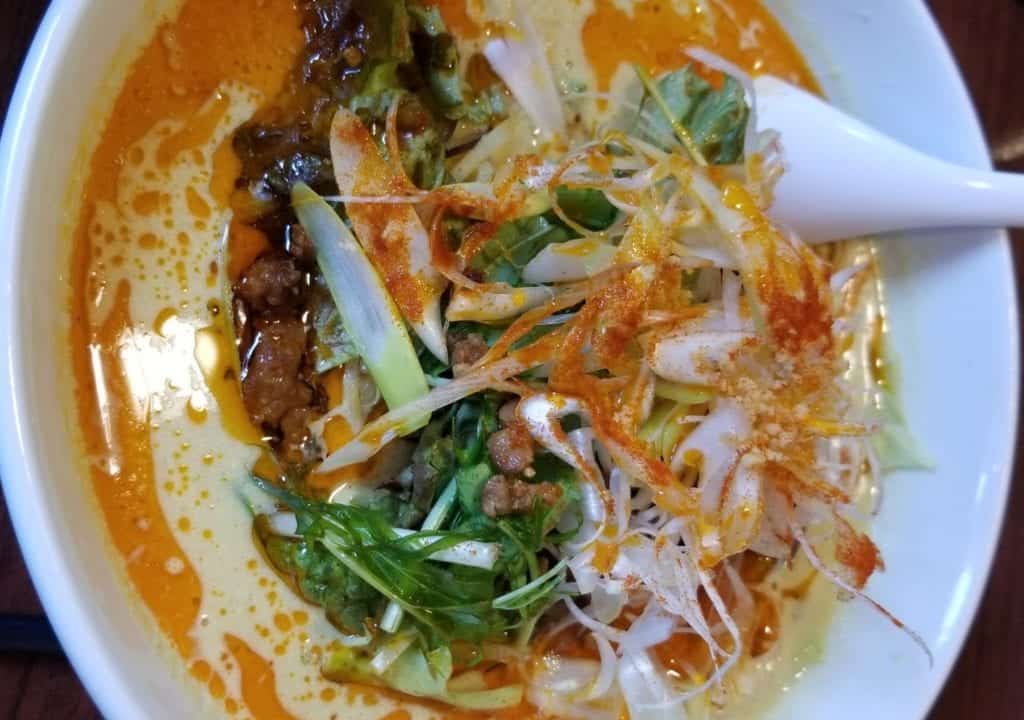
Oh, and if you are thirsty, they have a 飲み放題 (nomihoudai, all-you-can-drink) option. The rest of the food is also pretty spectacular and as is common in this type of restaurant, ordering more as you go is a common option.
Watch the afternoon hours
Like many spicy ramen shops, there is a break in the afternoon where alas, you can’t have color ramen. Apparently, we are taking a note from the Spanish siestas! And if you’ve had a big bowl of spicy anything, you know you wouldn’t mind a nap afterward either!
They are open weekdays for lunch between 11:30 am and 3 pm and dinner from 5 pm and midnight. Weekends there isn’t a break and you can go at any time.
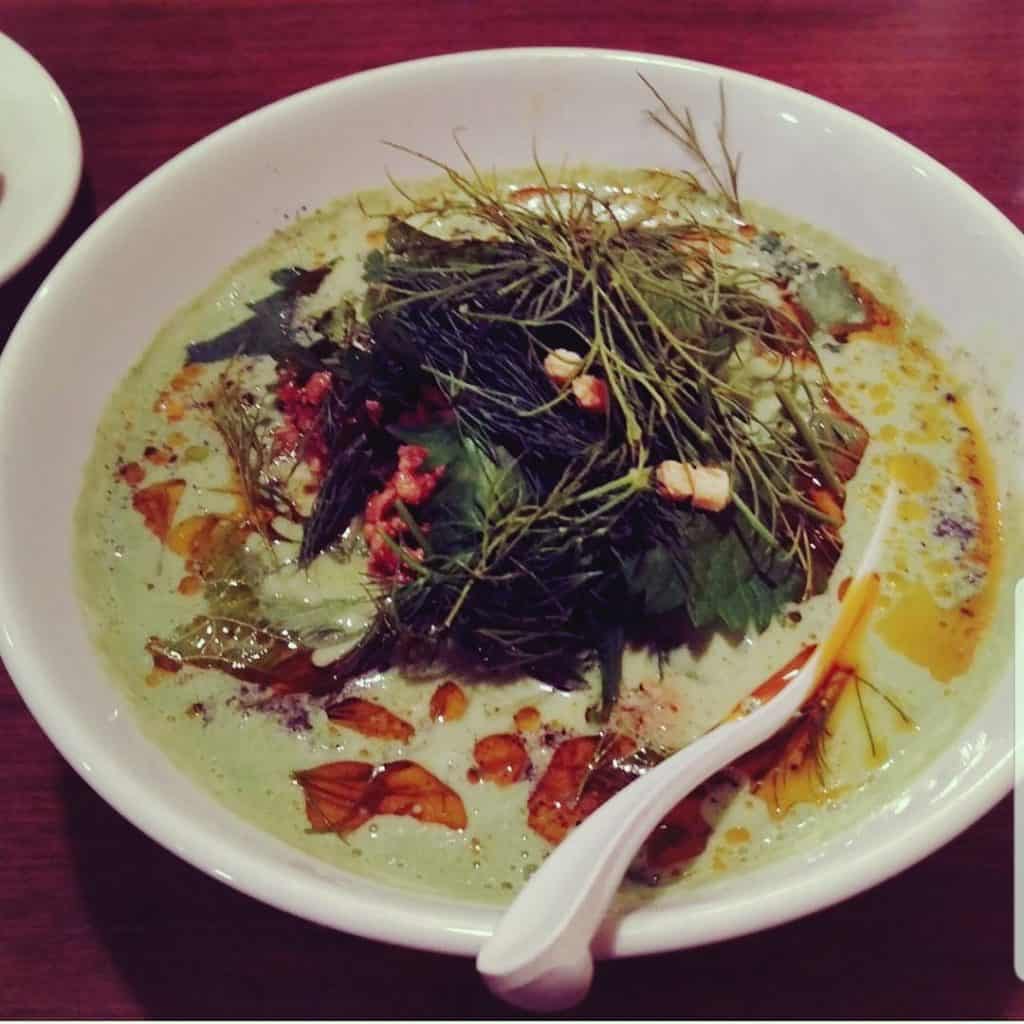
Getting Here
The area of Noge is packed full of delicious bars and restaurants. If you are in Yokohama, you definitely want to give it a try. You’re
- Hinodecho (日ノ出町駅) on the Keikyu Line
- Sakuragicho (桜木町駅) on the JR and Blue Lines (the Blue Line is Yokohama’s subway system)
- Kannai (関内駅) on the JR and Blue Lines
Other things to do in the area
Noge isn’t just a good place for tantanmen in Yokohama, it’s an area for nightlife. You can eat and drink to your heart’s content at the izakaya and “snacks” that line the area. Basically, come hungry and maybe stay a few days. It’s also close to another of my favorite restaurants, Hanasaki Butcher’s Store.
Noge is also relatively close to the Minato Mirai region of Yokohama. There is shopping and museums check out. On weekends, there’s a good chance you’ll be able to find a festival at Akarenga or the “Red Brick Warehouse”. There in August? Don’t miss out on the Pikachu Outbreak!
There is a small area of amusement park that you can check out the Cosmos Clock 21 which was the largest ferris wheel in the world in the 1990s.
Don’t forget Yokohama has the largest Chinatown in the world if you want more Chinese food and if you didn’t get your ramen fill with color ramen, head over to the CupNoodle Museum or on the train over to the Ramen Museum.
Pin this for later

